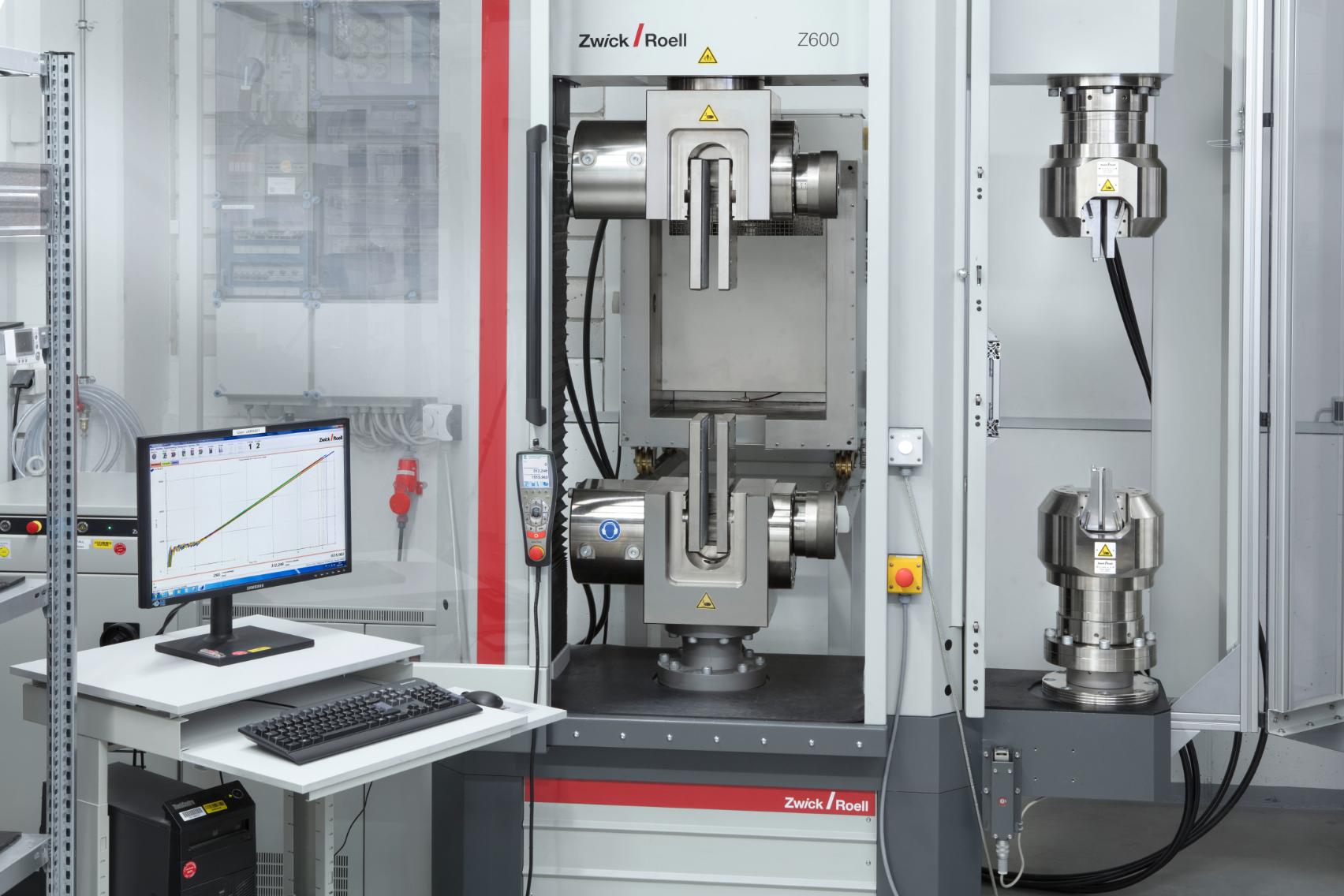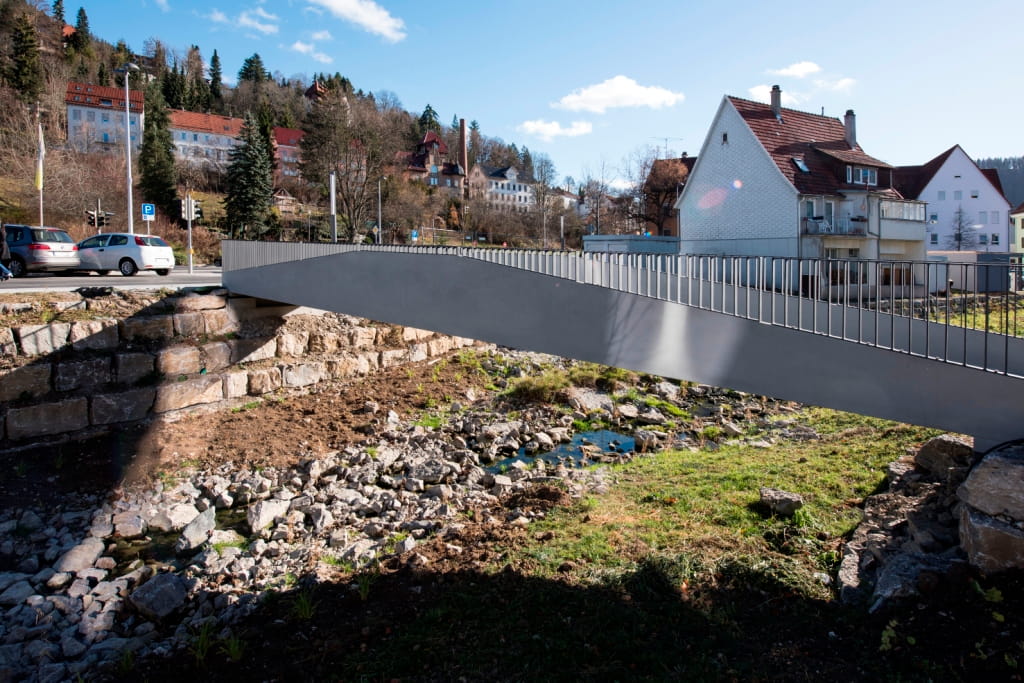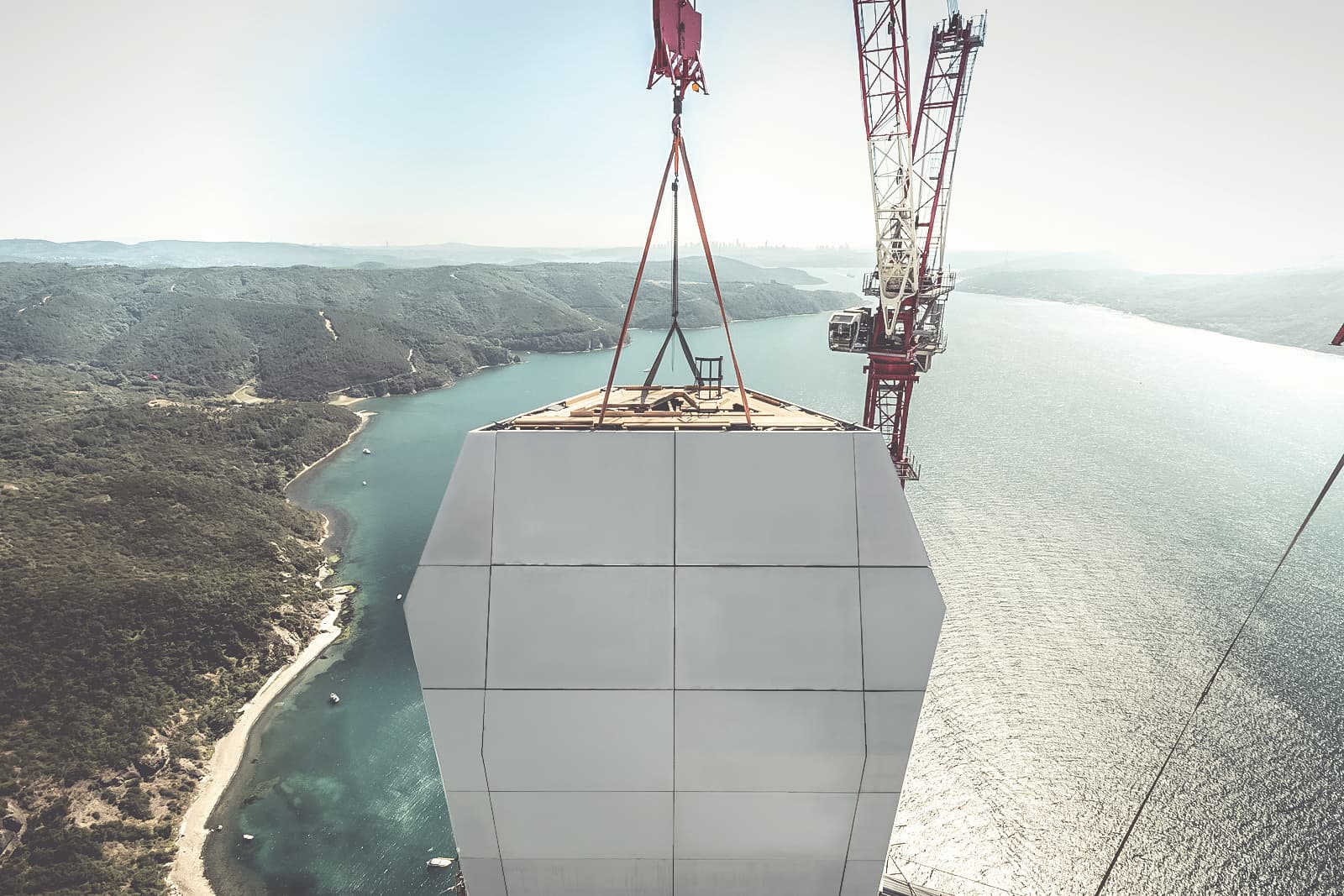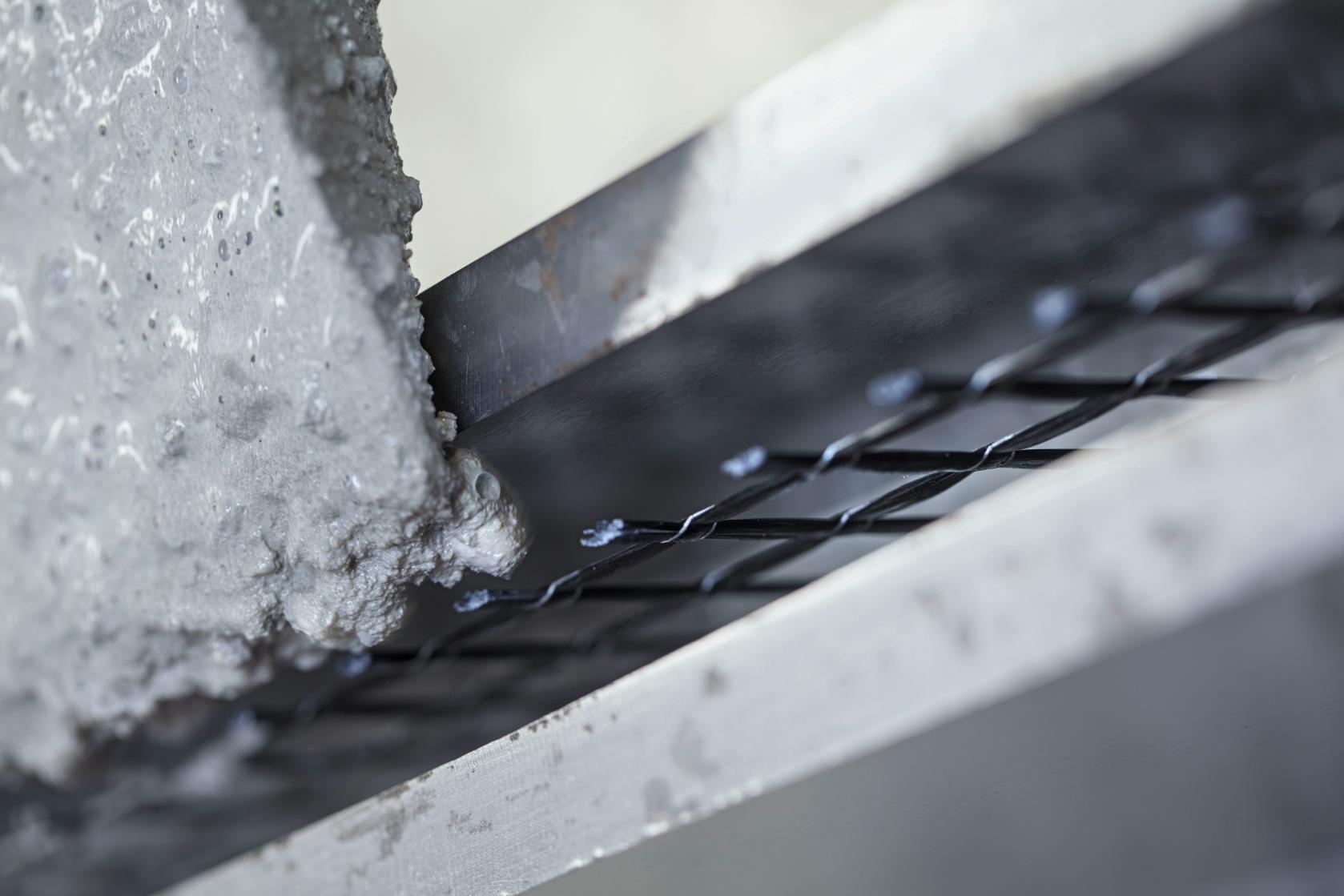Non-metallic reinforcements like FRP (Fiber-Reinforced Polymer) are transforming construction by offering lighter, stronger, and more durable alternatives to traditional steel reinforcement. With no risk of corrosion and a service life of over 100 years, they are setting new standards for efficiency and sustainability in concrete structures.
To better understand how FRP reinforcements are developed, tested, and applied in real projects, we spoke with Dr. Marcus Hinzen, Head of Product Development.
In this interview, Dr. Hinzen shares insights on:
- Why FRP reinforcements are changing the way we build
- How solidian tests and certifies these materials in their in-house lab
- What challenges remain for wider adoption in the industry
- Examples of successful projects and what’s next in FRP technology
Read on to learn how solidian & kelteks is helping shape the future of construction with high-performance, non-corrosive reinforcement solutions.
FRP reinforcements are gaining traction in the construction industry. What makes them such a game-changing material compared to traditional steel reinforcement?
Fiber-reinforced polymer (FRP) reinforcements, also known as non-metallic reinforcements, consist of high-strength and very rigid high-performance fibers. Generally, alkali- and corrosion-resistant glass or carbon fibers are used for this purpose. In a textile process, grid-like reinforcement structures are produced, which are then impregnated with a polymer (usually a reactive resin).
The combination of these materials makes such reinforcements completely resistant to chloride-induced corrosion. Since corrosion damage is one of the main problems in the construction industry, which has to be repaired at great expense and ultimately also poses a safety risk, FRP reinforcements are real game-changers. Due to this advantage, components with FRP reinforcement can be designed for a service life of 100 years.
But there are even more positive effects. With no risk of corrosion problems, the descriptive rules for the composition of the concrete and the concrete cover for the exposure classes, which must be observed to avoid reinforcement corrosion, are no longer necessary. This means that environmental conditions with high chloride content (road salt XD or seawater XS) and strong carbonation of the concrete no longer affect the durability of the reinforcement. The resulting possible reduction in concrete cover means that components can be made significantly thinner. The associated savings in CO2-emitting cement and other resources is another game changer, isn't it?
Can you walk us through the different types of tests that are performed on FRP reinforcements in the solidian laboratory?
solidian's own materials laboratory has existed since 2015 and is tailored to the special challenges of testing fiber-reinforced plastics. In contrast to established testing institutes, all material-specific features that need to be taken into account when testing glass or carbon reinforcements could be considered when setting up the laboratory. This makes solidian's own test laboratory one of the best-equipped laboratories for the evaluation of non-metallic reinforcements. This is also reflected in completely new test methods that have been developed in-house and some of which have been adopted in current regulations.
We generally distinguish between tests that are carried out directly on the reinforcement itself and tests that evaluate the interaction with the concrete or mortar. The latter is particularly important because, in contrast to the geometrically standardized steel reinforcements, the non-metallic reinforcements available on the market today have very different surface geometries, which can lead to correspondingly different bonding behavior in the concrete. Individual testing, in particular of the composite behavior in concrete, is therefore of particular importance.
In addition to laboratory tests, we can also carry out smaller tests on concrete elements that take into account the real dimensions of components. This is particularly interesting because certain properties, such as the deflection of filigree concrete elements or the practical production of the components, can have an influence that must be recorded. In this context, we are happy to offer potential customers and development partners the opportunity to spend a day with us conducting tests in which we examine our partners' and customers' products together with our reinforcements. For example, we can also examine the load-bearing behavior of our reinforcements in specific repair mortars, which can then be offered to the market together as a system solution. This also ensures that the know-how of those involved remains within a small circle.

Before FRP reinforcements can be used in real applications, they must undergo strict testing. What are the key aspects you evaluate in the laboratory?
This probably refers to the development process. Due to the aforementioned equipment of the laboratory, we can take into account almost all the properties of our products that are important for later application at a very early stage of product development. This allows for rapid iteration when determining material compositions and process parameters.
The main aspects to be considered can be divided into geometric, chemical-physical and mechanical properties.
In order to ensure that non-metallic reinforcements can be drawn to scale in plans, and since these can vary greatly from product to product, the external dimensions, such as the height of the fiber strands or knots, but also the irregular cross-sectional areas and the mesh openings to ensure that the concrete can be poured, must be recorded.
There are two main areas of focus in the chemical-physical investigations. Firstly, all fiber-reinforced plastics exhibit temperature-dependent tensile and composite behavior, which must be precisely described and understood so that safe design of structures is possible even at particularly high and low temperatures. For example, we determine softening points of resins and reduction factors for certain temperatures so that all influences can be taken into account when dimensioning structures. The second focus is on long-term behavior. Here it must be ensured that the highly alkaline environment of the concrete does not attack either the polymers or the fibers used during the entire service life of the structure. This is ensured in elaborate long-term test procedures with simultaneous exposure to temperature, alkalis, moisture and load. Of course, all solidian products have successfully passed this test.
Finally, the mechanical tests are concerned with the transferable tensile and bond forces of the reinforcements. Carbon fibers have up to eight times higher tensile strengths than reinforcing steel. In order to be able to exploit these strengths, there are high demands on the laminate quality, which is tested in various tensile tests. It is a particular challenge to introduce such high forces into the concrete without the concrete failing before the reinforcement. Bond tests are available for this purpose, with which all cases of failure can be covered.
How does solidian ensure the quality and consistency of FRP reinforcements throughout production?
At solidian, we have had an in-house production control system for many years to ensure essential properties and guarantee them for the user. Incidentally, the existence of the internal materials laboratory has also made a major contribution here, because the tensile strength of the reinforcements can be monitored during production. This makes it possible to respond very quickly in the event of deviations in the process. It also means we collect a large amount of data, which helps us to define reproducible reinforcement properties when creating data sheets. In addition, we naturally also check the quality of our purchased raw materials, so that continuous monitoring of properties is possible.
Certification is a key step in bringing new construction materials to market. What are the most important certifications that FRP reinforcements must meet?
In Germany in particular, but also in most other countries, this is of course the general approval for the construction product. Such approval is always additionally necessary if the product is not a regulated construction product, for example if no product standards or other technical building regulations exist. In addition, also the application must be regulated. This could be, for example, a specific building component that is manufactured using an approved reinforcement product. In the construction industry, however, in addition to the approved construction products and applications, a link to a design guideline is also required so that the new construction products can also be individually designed. For many new construction products, however, existing design rules can be used. In the case of non-metallic reinforcements, this was not possible because the specifics of the design and execution were not described in any existing document. Therefore, such a design basis in the form of a German guideline had to be created first. Overall, the whole approval procedure always involved a certain amount of effort for the interested user.
We are all the more pleased that this hurdle was overcome in 2024 with the publication of our general product approval, the associated application approval and the first guideline from the German Committee for Reinforced Concrete (DAfStb) for design and execution. This represents a real milestone for this innovative construction method and now allows users to carry out projects without additional approval work.

It is therefore certainly the most important certification for the application, which is also confirmed by a certificate of conformity (Ü-Zeichen) in Germany.
Furthermore, a transparent presentation of the environmentally relevant effects of our products is also important to us at solidian. This is described in Environmental Product Declarations (EPD), which we have received for our approved reinforcement grids from an independent testing center. With the growing importance of life cycle assessments and life cycle analyses in the construction industry, such labeling of products is becoming more and more important.
6. With FRP reinforcements gaining popularity, what do you see as the biggest challenges for industry-wide adoption?
We have repeatedly found that innovations have a hard time in the construction industry. This is because people are very keen to fall back on established conventional products and processes. In a tightly regulated market, there is often little room for deviations from the usual approach. Fortunately, there are more and more users who are willing to take advantage of the possibilities offered by our existing approval and to implement innovative pilot projects. I consider it one of the greatest challenges to achieve this in a broad market.
Of course, we also have to pay attention to the training of the new generation of civil engineers. Students should be introduced to the new material at an early stage so that its practical application later on is no longer a challenge for them. Likewise, it is important that the workers on the construction site and in the precast plants are sufficiently trained and that unfounded reservations are dispelled.
Ultimately, the manufacturers of non-metallic FRP reinforcements must also continue to advance product development so that their use in practice can be carried out more and more smoothly.
Can you share an example of a project where FRP reinforcements have proven their value?
There are, of course, numerous construction projects that have been implemented. Let me briefly mention two examples that each demonstrate special advantages through the use of non-metallic reinforcement.
In 2015, we built a pedestrian bridge together with Max Bögl that was reinforced exclusively with carbon fiber grids. Due to the absence of corrosion, the bridge is cracked as planned and still does not require a surface protection system. In addition, the concrete cross-sections could be significantly reduced. This saved 50% of resources and 30% of CO2.

In 2016, we used carbon and glass reinforcement in the construction of the Bosporus Bridge. In the upper areas of the 320-meter-high pylons, the wind loads were very high and at the same time, the cladding elements could not be too heavy. With our reinforcements, it was possible to install elements that were only 30mm thick but had a high load-bearing capacity. This would not have been possible with normal steel reinforcement.

Looking ahead, what innovations in FRP reinforcement technology are you most excited about?
We already have a highly innovative product with excellent mechanical properties and a lifespan of 100 years. Today, non-metallic reinforcement can already be used in many applications without any problems and can be designed according to the guidelines.
However, an important requirement is the flexible formability of reinforcements, as is also the case with steel reinforcement. Here, fiber-reinforced plastics present us with greater challenges, since the high-performance fibers have no yield point. Therefore, we are working intensively on technical solutions with thermoplastic polymers, which in the future will enable forming on the construction site.
Also, the prestressing of concrete components with carbon reinforcements offers very special potential. Since the carbon reinforcements have a high load-bearing potential but a lower modulus of elasticity than reinforcing steel, prestressing offers the possibility of exploiting the enormous strength potential of carbon while complying with the usual deformation limits for concrete components.
👉 Want to design with FRP reinforcements?
Visit our Planning Center for technical details, design guidelines, and support for your next project.
Explore the Planning Center and take your construction solutions to the next level.








